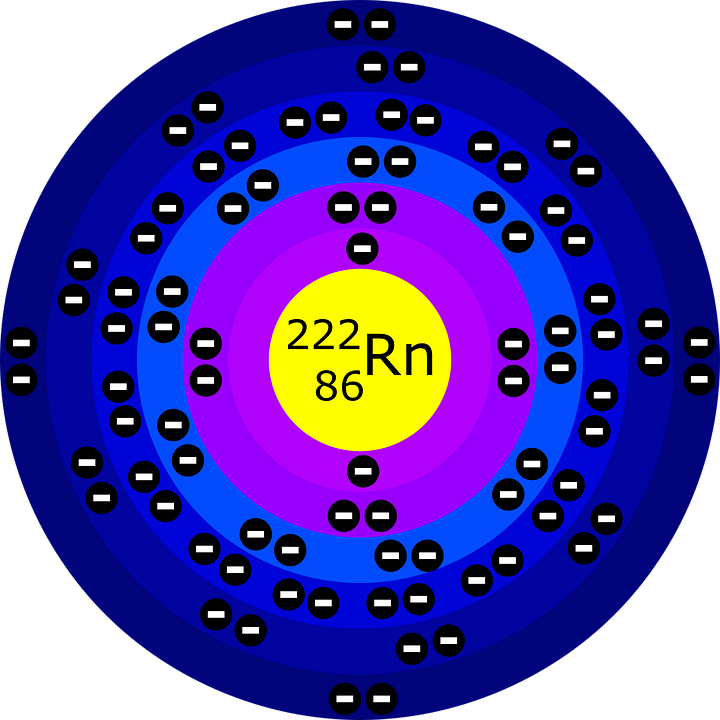
While it's important to protect your home from the everyday dangers that we know exist, like fires, flooding, storms and theft, it's also equally important to protect your home from the silent dangers that we can neither see nor hear, or even smell. Some of these silent dangers are just as harmful, if not more harmful, than a lot of the everyday dangers that we fear, yet some of them still manage to fly under the radar for the most part, and many people are left uneducated about the harm that these silent dangers can cause.
Carbon monoxide is widely recognized as the "Silent Killer" and for good reason. However, there is another silent danger that, up until recently, has managed to fly under the radar. While mostly everyone these days has a carbon monoxide detector mounted right next to their smoke detector, fewer people are aware of the cancer-causing radioactive gas called radon that is actually the second-leading cause of lung cancer in America behind smoking. In fact, almost 20,000 lung cancer deaths are caused every year by radon, according to the U.S. Environmental Agency.
Radon is a real threat to the health and safety of everyone who lives in your home, so that's why it's extremely important to take the necessary steps to test for the gas in your home and to monitor the levels to make sure that you and your family are safe. It's also important that you do whatever is necessary to prevent your home from being infiltrated by dangerous radon gas to ensure that you don't fall victim to one of the most potent silent killers.
What is radon?
So what is radon and where does it come from? Well, radon is a naturally occurring radioactive gas that is both colorless and odorless. The gas has properties similar to carbon monoxide, in that it is impossible to smell or taste and can only be detected by testing for it. It is produced from the natural breakdown of uranium and can be found naturally in igneous rock, soil and even well water. The main point of human exposure to radon is through inhalation, although ingestion is also possible if radon has infiltrated the water supply.
Because radon is produced in rock and soil, the most common entry points into your home are through places that are below ground. A basement or crawl space underneath the house are the most common entry points for radon and may contain higher-than-normal levels of the gas. Also, walls made of brick or cement are especially susceptible to higher levels of radon, as are slab joints and sump pumps. All of these areas of your home should be thoroughly tested for any presence of radon gas before you move in and then periodically while you are living there.
The U.S. Environmental Protection Agency (EPA) has estimated that approximately eight million homes throughout the country have higher-than-acceptable levels of radon, and that as many as one in five homes have elevated levels, or levels that are considered to be dangerous and potentially harmful to a person's health. The EPA has placed the recommended level of radon at 4.0 pCi/L. It is estimated that a family being exposed to 4.0 pCi/L of radon in their home is being exposed to levels of radiation that are 35 times higher than normal. Scientists place the risk of death from exposure to radon at this level to be 1 in 100, about 1,000 times higher than any other carcinogen.
How to eliminate radon from your home
If you have radon gas present in your home, there are a few things you can do to eliminate the gas and prevent any serious harm from being caused to your health and the health of your family. Of course, if the levels of radon present in your home are high enough, you should consult a trained professional who can safely rid your home of the radon.
- Before attempting to eliminate the radon from your home, make sure that you're practicing all necessary safety measures, such as protecting your airways and wearing a gas mask to prevent any radon from being directly inhaled.
- Since radon will seep in through cracks in your basement wall or basement floor and through cracks around utility pipes, you should thoroughly seal any of these cracks that exist in your basement with a high-grade sealant that can prevent any gas from seeping in to your home.
- Once the cracks in the basement are sealed and the main source of the radon gas is closed off, you should shut all windows or doors in the basement to prevent any additional radon from seeping in and then begin to eliminate the radon gas that already exists in the basement by forcing fresh air from the upstairs area of the house down into the basement using a fan. This technique, called house/room pressurization, will eliminate the radon that exists in the basement and will keep the levels of radon from rising any higher.
- Open all of your windows in the upstairs area of your house to rid your home of any residual radon gas and use forced ventilation to remove any particularly high concentrations of the gas by allowing air into the home and forcing the existing air inside of the home out through vents and open windows. This should effectively carry most of the radon out of the house.